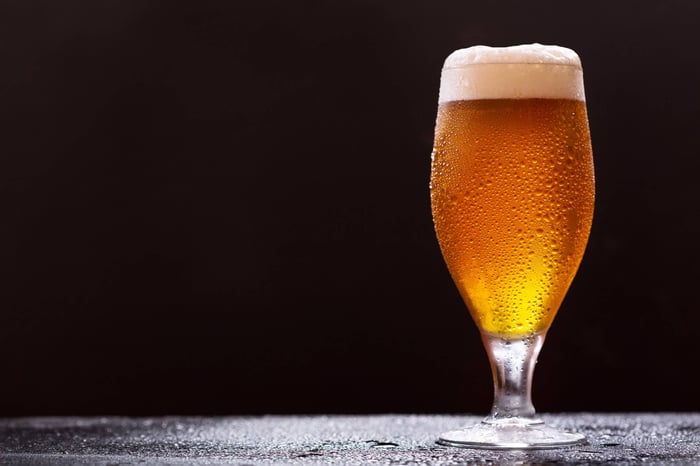Let's be honest – we've all been there. You crack open that first bottle of your latest homebrew, take that anticipated sip, and... something's just not right. Whether you're pulling your first all-grain batch or you're a seasoned homebrewer, off-flavors happen to the best of us. The good news? Most of these brewing hiccups are totally preventable once you know what to look for.
Think of off-flavors as your beer's way of telling you a story about what happened during the brewing process. Some tales are more pleasant than others, but they're all learning opportunities that'll make you a better brewer.
Your Off-Flavor Prevention Toolkit
Before we dive into the detective work, let's talk about your best defense against brewing mishaps. These fundamentals will set you up for success every single time:
Master the Clean Game – This isn't just about wiping down your equipment. We're talking military-grade sanitization here. Your brewing gear should be cleaner than a whistle.
Show Your Yeast Some Love – Healthy, happy yeast makes healthy, happy beer. For liquid yeast, whip up a proper starter. For dry yeast, check those expiration dates and give it a proper rehydration.
Don't Skip the Oxygen – Your yeast needs to breathe before it gets to work. Whether you're shaking that carboy like a protein shake or using a dedicated oxygenation system, make sure your wort gets properly aerated.
Nail Your Fermentation Temps – Each yeast strain has its sweet spot. Stick to it religiously.
The Usual Suspects: Common Off-Flavors Decoded
The Green Apple Bandit (Acetaldehyde)
What it tastes like: Picture biting into a tart green apple, or worse – that cidery taste that makes you wonder if you accidentally made apple wine instead of beer.
The culprit: Your yeast started the job but didn't finish it. Acetaldehyde is like the rough draft of alcohol – it needs to be converted to ethanol, but sometimes that process gets interrupted.
Common causes: Under-pitching yeast, brewing high-gravity beers without enough yeast support, or fermentation temperatures that are way off target.
Your game plan:
- Give your wort a good shake or proper oxygenation before pitching
- Keep oxygen away once fermentation starts (we know it's tempting to peek, but resist!)
- Let fermentation complete fully before packaging
- Double-check your sanitization if you're getting rotten apple flavors
The Butter Bomb (Diacetyl)
What it tastes like: Movie theater popcorn butter or butterscotch candy. Sounds delicious until it's in your IPA.
The culprit: Your yeast produced diacetyl during fermentation but didn't clean up after itself. Normally, yeast reabsorbs this compound, but sometimes it needs more time or better conditions.
Your strategy:
- Treat your yeast like the VIP it is – proper nutrition for high-gravity brews
- Pitch at the right temperature (no shocking the little guys)
- Be patient with fermentation, especially on lagers
- Consider a diacetyl rest for temperamental styles
The Fruit Salad Fiasco (Esters)
What it tastes like: Banana bread, pear drops, or sometimes even bubblegum. Great for a Hefeweizen, not so much for your pale ale.
The story: Esters are fermentation byproducts that add fruity characteristics. Some beer styles welcome them, others don't.
Prevention tactics:
- Keep fermentation temperatures on the cooler side
- Pitch adequate yeast quantities
- Ensure proper wort aeration
- Consider switching from English to American yeast strains if this keeps happening
The Spice Rack Invasion (Phenolic Compounds)
What it tastes like: Christmas spices like cloves and cinnamon, or worse – plastic and smoke flavors that'll make you question your life choices.
The science: Phenolic compounds can create amazing flavors in styles like Hefeweizen, but they're party crashers in most other beers.
Your defense:
- Check your water source – chlorine is a major culprit
- Try switching to bottled water for your next batch
- Swap out Belgian or Bavarian yeast strains for American or British alternatives
- [LINK: Mangrove Jack's Craft Series Yeasts] – check out our yeast selection
The Paint Thinner Problem (Fusel Alcohols)
What it tastes like: Hot, solventy, like someone spiked your beer with nail polish remover.
What went wrong: Higher alcohols (fusel alcohols) crashed your fermentation party uninvited. These bad boys show up when fermentation gets too hot and heavy.
Keep them out:
- Stick to recommended fermentation temperatures religiously
- Use a fermentation chamber if your ambient temps are unreliable
- Don't rush the process – slow and steady wins the race
The Corn Maze (Dimethyl Sulfide - DMS)
What it tastes like: Creamed corn or cooked vegetables. Not exactly what you want in your crisp lager.
The technical bit: DMS comes from S-methylmethionine (SMM) that forms during malting. Lighter malts have more SMM, which breaks down during mashing and needs to be boiled off.
Your action plan:
- Never cover your kettle during the boil – DMS needs to escape
- Maintain a vigorous, rolling boil
- Cool your wort rapidly after boiling – hot wort keeps producing DMS
- Don't let your wort sit around hot
The Vinegar Villain (Acetic Acid)
What it tastes like: Straight-up vinegar. Unless you're brewing a sour, this is game over.
The bad news: This is usually bacterial contamination, and there's no fixing it once it happens.
Prevention is everything:
- Sanitize like your beer depends on it (because it does)
- Keep fermentation vessels sealed tight
- Don't open that fermenter to "check on things"
The Bottom Line
Here's the thing about off-flavors – they're part of the learning curve, not a reason to hang up your brewing paddle. Every experienced brewer has dumped a batch or two (or more than they care to admit). The key is learning from each brewing adventure and tightening up your process.
Remember, great beer starts with great practices. Master your sanitation game, treat your yeast right, and pay attention to the details. Before you know it, you'll be pouring perfect pints that'll make your friends wonder if you've gone pro.
Got questions on off flavours - get in touch - we're always up for a proper brewing discussion!
Grainfather Team










